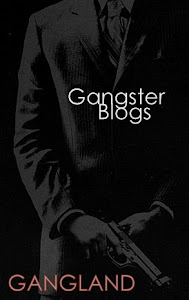Security Minister Martin Joseph stated that there were now 86
gangs, comprising up to 1,720 members across the country.
He said the average size of each gang varied between 15 to 20
members, which meant that the total membership was between
1,300 to 1,720 persons.
Criminal gangs in Trinidad and Tobago are multiplying and
fast, both in terms of the numbers of gangs and the numbers of
persons joining gangs. The activity is leaving one with
inescapable conclusion that the society is now under greater
threat.
The situation has deteriorated considerably over the past 18
months. The last time Joseph gave a head count, he told the
House of Representatives on June 6, 2005, that there were some
"500 hardcore members" in the "66 known gangs".
Yesterday's figures therefore represent an over 340 per cent
increase in the membership of gangs and a 30 per cent increase
in the numbers of gangs.
Joseph said the reason for the proliferation was because
"splinter groups were being formed within gangs as a result of
some displacement activity".
Asked by Tabaquite MP Ramesh Lawrence Maharaj whether any of
these criminal gangs were brought to justice in the courts,
Joseph said his understanding was that a number of them were,
but he did not have the specific information.
The minister has repeatedly stated that the record murder toll
for last year was the result of gang-related activity, since
most of the homicides in Trinidad and Tobago are gang-linked.
He also stated that most of the gang-related activity is
directly linked to the problem of the illegal drug trade and
the prevalence of firearms.
Yesterday, Joseph said among the initiatives taken since 2006
to arrest gang members were the establishment of the Homicide
Prevention Working Group and the Inter Agency Task Force
(IATF), which created a presence in Carenage, Diego Martin,
Beetham Gardens and Cocorite. This was in addition to the
established centres of operation in Quarry Street, Charford
Court, Harpe Place and Beverly Hills, he said. (See Page 6)
He said because efforts to disrupt the activities of gangs
also had to include initiatives to disrupt the drug trade,
Government had also restructured the Homicide Bureau of
Investigation, established the Repeat Offenders Programme,
purchased vehicles, established police posts in the
Morvant/Laventille area to deal with rising gang activity; the
establishment of the Crime and Problem Analysis Branch; E-999
patrols, roadblocks and other police and joint army and police
patrols.
In response to another question, Joseph revealed that the
Firearms Interdiction Unit had seized a total of 111 firearms
and 2,813 rounds of ammunition between 2003 and 2005, when it
was disbanded. The areas from which the arms and ammunition
were retrieved included Chatham, Port of Spain, Arima,
Tableland, Claxton Bay, San Fernando, Chaguanas, Princes Town,
Laventille, Cunupia, Longdenville, Cedros, Sea Lots, Valencia,
Morvant, Curepe, Valsayn North, Trincity, Rousillac, Toco,
Maracas Bay and Tobago.
He said the FIU was disbanded in July 2005, and since then the
Police Service has seized 110 firearms in the last six months
of 2005, 266 in 2006 and 220 in 2007.
GANGWORLD CUSTOM SEARCH

Custom Search
Subscribe to:
Post Comments (Atom)













1 comments:
in trinidad ,everyone in the streets think they are gangsters(guntas)but the rich are the one causimg crime to increase now they want it to stop but they cant control the youths have no remorse,and only listen to individuals who are more violent than them and who support them financially,plus they are underestimating trust me i know
Post a Comment